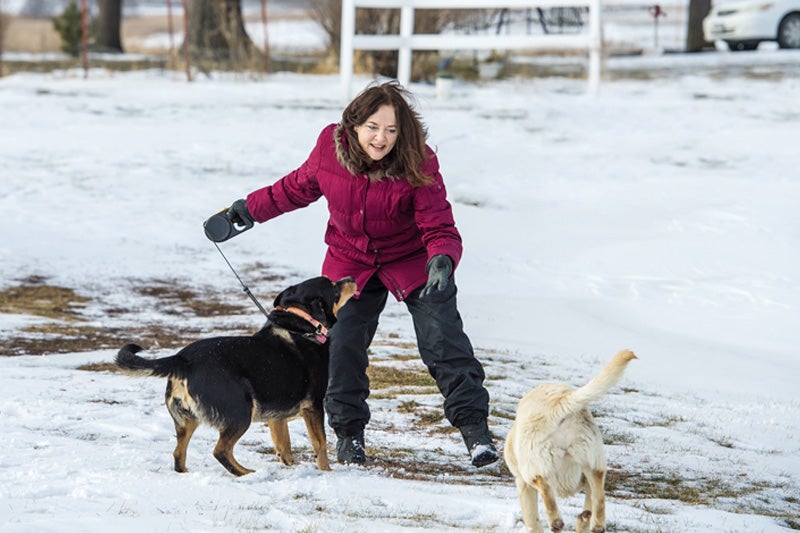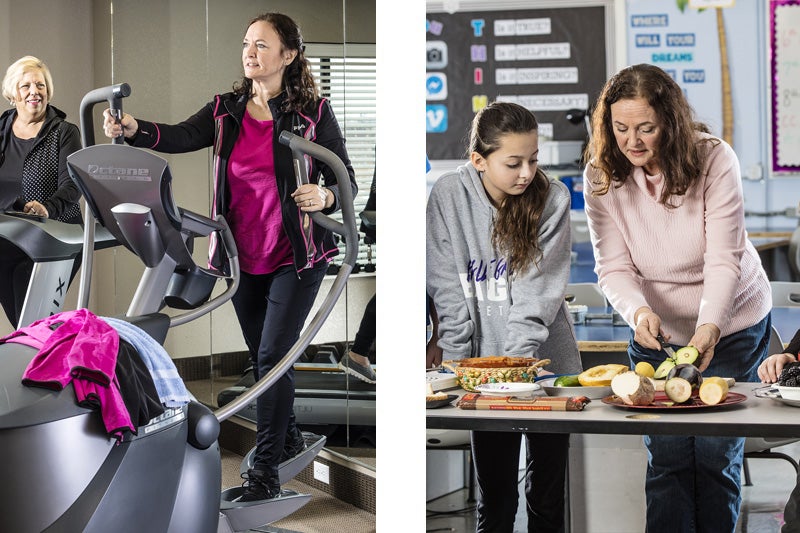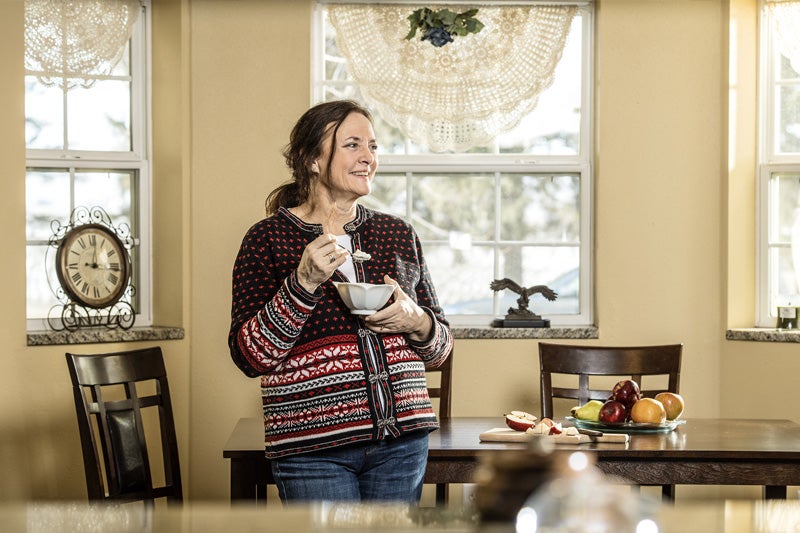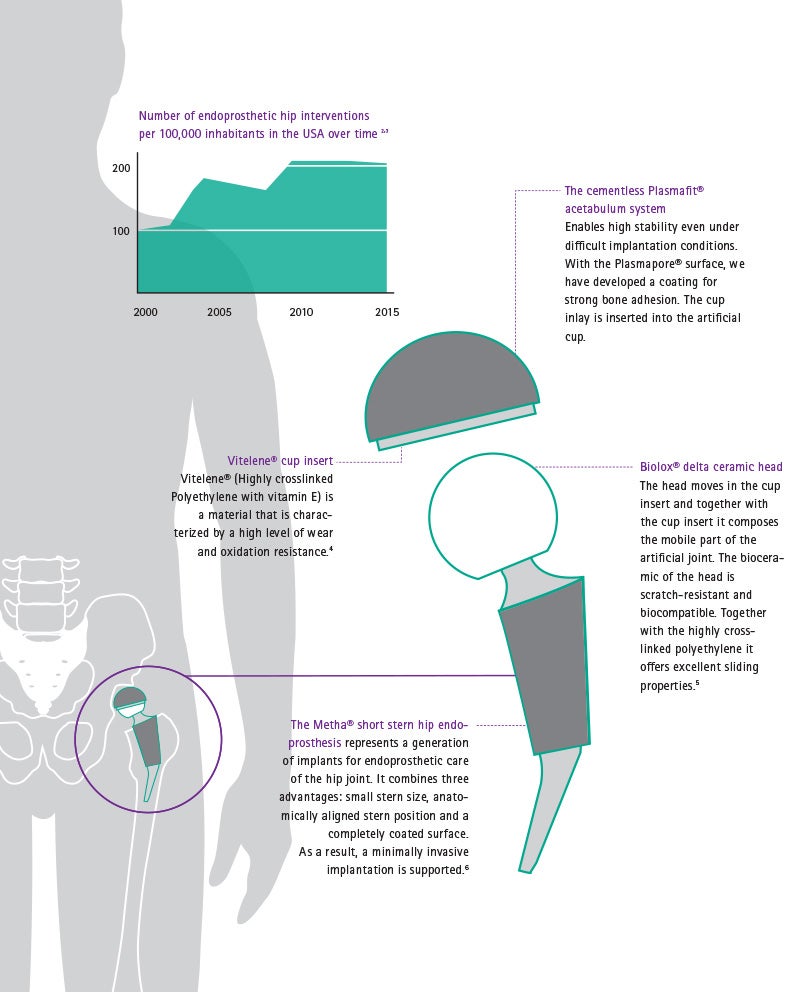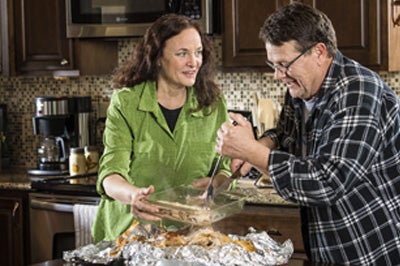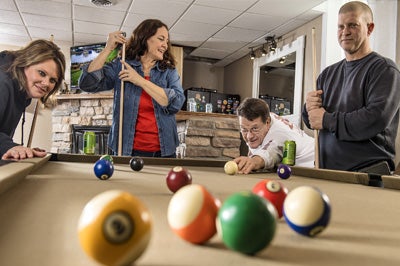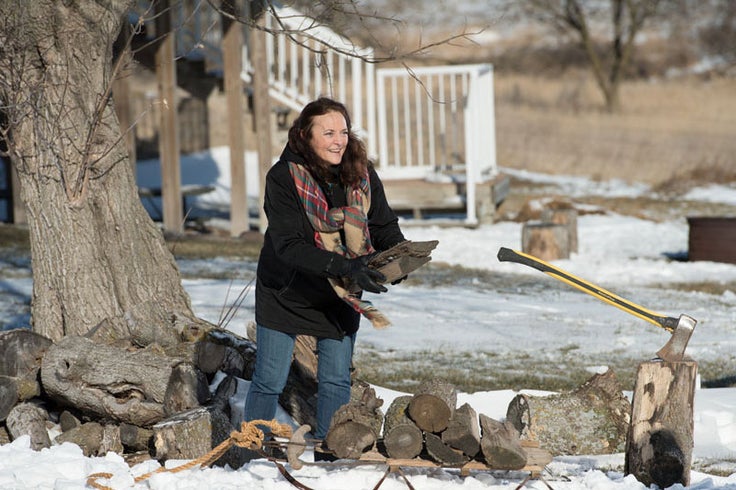My daily Routine: Always keep moving
Sometimes I wake up in the morning, stretch and can hardly believe that nothing hurts, that I can move all of my limbs and that I'm completely healthy. I know not to take that for gran- ted. And I know that I don't just have God, fate or myself to thank for it, but also some very good doctors. For example, I've already had back surgery. And surgery on my right hand when a nerve was damaged.
Most little girls dream of becoming movie stars. I had a little doctor's bag I used to treat my dolls and dreamed of one day becoming a nurse. And that's exactly what happened. After my training, I first worked in a hospital and then I worked as a school nurse for 31 years. Besides treating students' major and minor illnesses and injuries, such as cuts, sprained ankles and broken legs,
I also taught the children about the biology of the human body, how it falls ill and how it heals.
I wanted to interest the children in modern medicine.
„Everything about health has always fascinated me.“
Sometimes I wonder how my sister Ann would be doing if she had lived only thirty or forty years earlier. Ann is four years older than I am. She was always my role model and also became a nurse; that encouraged my career aspirations at the time as well. Ann lives in California, but we talk on the phone at least once a week, send each other photos and write each other messa- ges. We visit once or twice a year. Ann has known me my whole life: she knows everything about me. And I know everything about her.
In 1998, Ann could hardly stand, walk or lie down any longer due to pain. I remember how bad it was for her and how badly I felt for her. Ann received an artificial hip implant on the right side. In 2011, she also needed a prosthesis on the left. This time, the doctors made only a small incision in the groin, a minimally invasive operation that was still very new at the time. Ann recovered much quicker than she did from the first operation. Today, she has virtually no problems anymore. My other sister Kathy, who is 14 years older, has two artificial knees. It looks like joint problems run in the family. I listen to my own body sometimes and ask myself whether my hip hurts, whether everything is okay with my knees, when I'm running after the dogs or lifting a case of water out of the car. I know that I'm not getting any younger. So far, though, I don't feel any pain. I'm very thankful for that. But even if I were to have problems after all, I wouldn't worry.
I know that I would receive excellent help.
Making pain-free walking possible again
Orthopedic joint replacement | After the knee, the hip is the second largest joint in the human body. We stress and burden it with nearly every movement. Over the years, the cartilage increasingly wears away from the femoral head, the acetabulum or both. Arthrosis often develops as a result, particularly in older people. Those affected suffer from pain and their mobility is frequently restricted. In the past, patients with advanced hip arthrosis were barely able to stand or walk. Today, modern medicine can help.
New mobility
In patients with the onset of arthrosis, physical therapy and medications can have mitigating effects. Often, however, the joint degeneration progresses, the protective layer of cartilage is reduced, bone rubs on bone, the pain gets increasingly worse, and even sleeping can become very difficult. In the worst case, the joint stiffens entirely. These cases can be helped by hip joint replacement.1 In the USA, for example, surgeons implant more than 600,000 artificial hips every year.2 Patients who receive the surgery for the first time are 64 years old on average. Because people are living longer, the number of hip operations is also increasing. This is because the most frequent reason for a hip endoprosthetic, in addition to arthrosis, is agerelated: fractures on the femoral neck, caused by osteoporosis3 – a disease in which bones lose their strength.
Hip replacement is not only one of the most frequent, but also one of the most successful surgical interventions of all: nine out of ten patients report a pain-free life and enjoy newfound mobility after such an operation. There are many reasons for these statistics, such as optimized postoperative care, but also technical progress and innovations, which we have promoted at B. Braun. For example, nowadays a minimally invasive total hip arthroplasty is possible.
Precision in demand
This protects muscles and tissues and enables faster rehabilitation. In close collaboration with surgeons, we have developed the instruments necessary for minimally invasive surgery, such as MIOS hip retractors for holding the operation site open. The stem implants have also been modified and shortened in order to faciliate tissuesparing implantation. Innovative materials, such as the age-resistant polyethylene Vitelene®, also contribute to the long-term success of a total hip arthroplasty and are an outcome of our constant research and development.
Here you will find all sources used for the Annual Report 2017.
